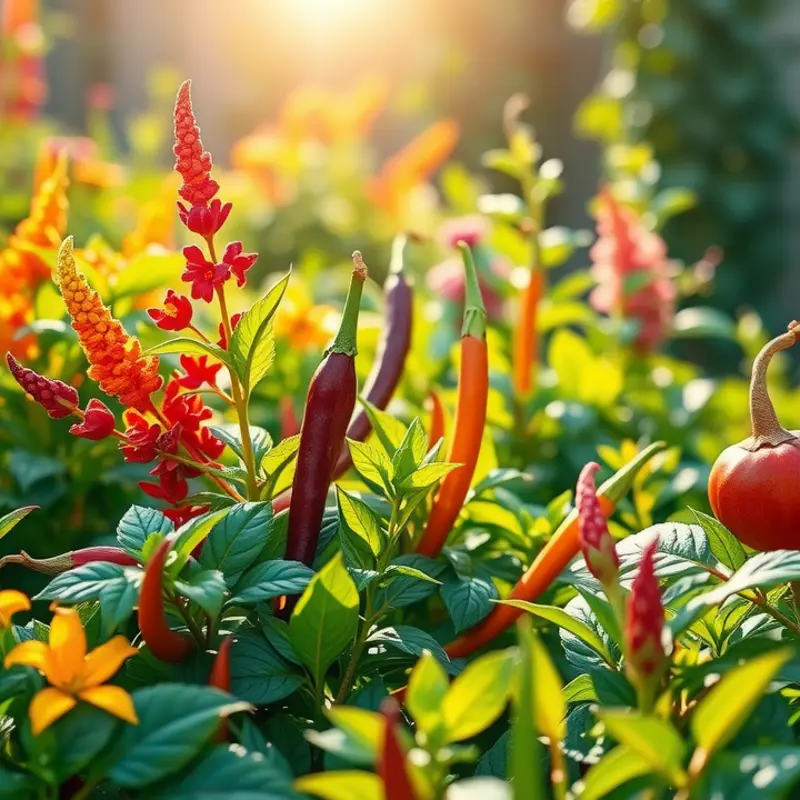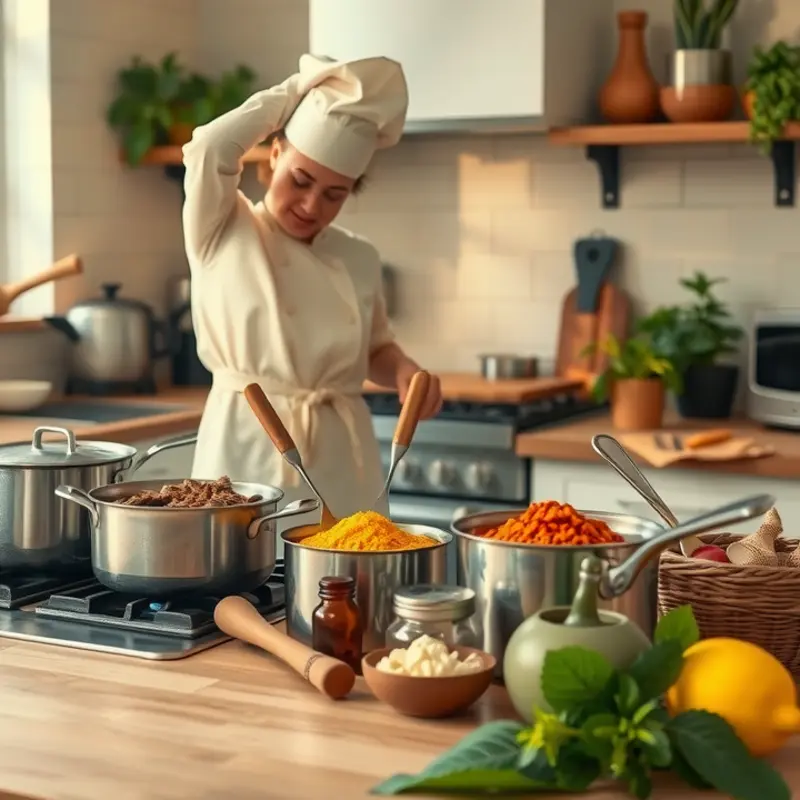Cooking with spices can transform a dish from ordinary to extraordinary. However, the fine line between perfect flavor and bitter burn can be tricky for many home cooks. Learning how to handle spices correctly is an essential kitchen skill that can elevate your meals to restaurant-quality experiences. This guide is designed to provide home cooks of all levels with practical tips and techniques to cook with spices without burning them, ensuring that every dish can be flavorful and delicious.
Understanding Spice Varieties and Their Timing

To master spices, finding the balance between flavor and timing is key. Various spices offer different profiles and heat levels, and they each possess an ideal moment to make their mark in a dish.
Spices like cumin, coriander, and fennel impart deep flavors and work well with a longer cooking time. Add these early, allowing their aromatic oils to infuse your base. When simmered or slow-cooked, they develop a warm, earthy taste that underpins a dish beautifully.
Conversely, spices such as paprika and cayenne pepper should be treated with care to prevent bitterness. Add them halfway through cooking to allow heat to mellow their sharpness without scorching. Incorporating them too early can cause a dish’s spiciness to overpower other flavors.
Herbs like basil and parsley can lose their freshness and bright notes if cooked too long. Adding these near the end preserves their vibrant color and aroma. This timing is crucial in dishes like sauces or stews that simmer for a while, ensuring these delicate herbs can shine.
When handling strong spices, like cloves and star anise, use sparingly early on to avoid overwhelming flavors. These spices offer a powerful punch and even a small amount suffices in infusing a complex mixture into broths or marinades.
Pay attention to the form of the spice. Whole spices need more time to unlock their full potential. Grinding them releases essential oils, enhancing flavors more directly. Toasting whole spices briefly before grinding can elevate aroma and depth.
We’re often tempted to use pre-ground versions for convenience, but fresh grinding unlocks a world of difference. For those seeking convenience but still wanting optimal flavor, try culinary practices like minimal prep dinners that can make spice management easier.
When experimenting, consider heat sensitivity. Adding crushed red pepper flakes towards the end preserves their heat. If you’re concerned about overpowering heat, add it gradually, tasting frequently. Over time, heat integrates into the dish and the longer it cooks, the more potent it becomes.
Precision with spices makes all the difference in home cooking. With a deep understanding of each spice’s whims, you can transform your cooking and impress at every meal.
Essential Techniques to Prevent Burning Spices

Mastering the use of spices can elevate everyday dishes to new culinary heights. One common challenge, however, is preventing them from burning, which can lead to undesired bitterness. Understanding the subtleties of timing and temperature can help avoid this pitfall.
When cooking with spices, the timing of their addition to your dish is crucial. Spices release their flavors when heated, but the right moment to add them depends on the type of dish and cooking method. In most cases, it’s best to add ground spices towards the end of cooking, or even off the heat, to retain their volatile oils. Whole spices, conversely, benefit from slow cooking, which allows their flavors to infuse gradually into the dish.
Sautéing is a common step where spices risk burning. When preparing a base of aromatics such as onions, garlic, or ginger, add spices once the vegetables start to soften. Ensure the heat is medium, allowing the spices to toast gently without burning. Remember to stir frequently to distribute the heat evenly. This technique enhances the depth of flavor as the spices release their essential oils, transforming the dish’s aromatic profile.
Temperature plays an equally important role. Spices are delicate and can quickly turn bitter if exposed to high heat. Maintain a steady, moderate temperature when incorporating spices—particularly cumin, coriander, and mustard seeds—which are prone to rapid cooking. For toasting whole spices, use low heat and keep an ear out for a change in sound. A gentle sizzle indicates their flavor is being released, while a harsh popping could signal they’re on the brink of burning.
Liquid-based dishes, such as soups and curries, offer more forgiveness when it comes to spice addition. Liquids help disperse heat and minimize the risk of burning. To unlock the full potential of spices in these dishes, consider blooming them in oil first. Here’s how: heat a small amount of oil until shimmering, then add your spices, stirring quickly until they become fragrant. Follow with your base liquid and other ingredients, ensuring the spices infuse without scorching.
For dry roasts or grilling, consider marinating proteins with spices mixed in oil or yogurt. Fat acts as a heat buffer, allowing the spices to cook evenly without direct exposure to intense heat. This method not only prevents burning but also enhances moisture retention, resulting in a more succulent final dish.
For further exploration of how different cooking techniques affect ingredients, consider checking out the Easy Sauce Simmering techniques. Integrating such techniques can offer a broader perspective on managing temperatures and timings across various recipes.
Incorporating these essential techniques will enable you to maximize the flavor potential of spices while keeping bitterness at bay. By understanding the nuances of when and how to add spices to your cooking process, you can create dishes that are both flavorful and aromatic, enhancing your overall culinary experience.
Final words
Mastering the use of spices without burning them can significantly enhance your culinary skills. By understanding the types of spices, their recommended cooking times, and techniques to add them to your dishes, you can achieve a perfect balance of flavor every time. Always remember to add spices thoughtfully and monitor their cooking closely to avoid bitterness. With practice and patience, you will become more confident in your ability to incorporate spices into your cooking, creating memorable meals for you and your loved ones.







